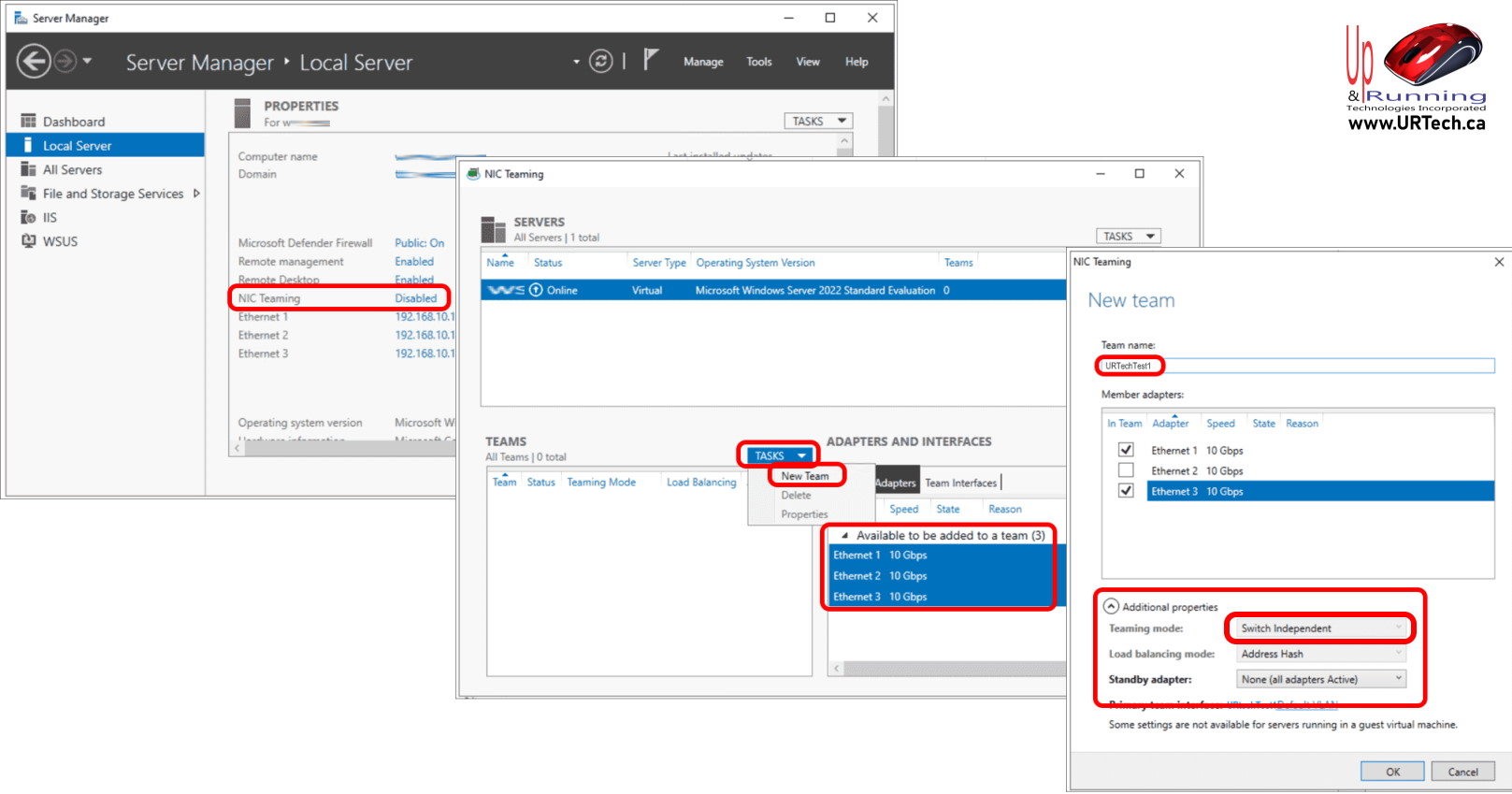

In today’s world of Virtual Machines it’s easy to think that network speeds don’t make that much of a difference but the fact is that many small and medium sized companies still operate with on-premise servers that host their virtual machines. Also there is more than one reason to use network card teaming.
NIC teaming allows more than one network card to be used at the same time, on the same network. Teaming network cards allows administrators to primary advantages:
Joining multiple network connections together into a single virtual network card called a “NIC Team” Will allow multiple users to transfer files and data without contention from other users or network traffic.
Let’s take a simple example of a common Dell or HP server that ships with four 1 Gb network ports on the back. If you combined three of those NIC into a single NIC team, It would allow for a theoretical maximum of 3 Gb per second. If you had a slightly higher end server it might have two 10 Gb connections which you could join together into a single 20 Gb NIC Team.
There is however one minor catch which is that under most configuration scenarios adding network cards to a NIC team will not increase the theoretical maximum transfer speeds for a single user transfer. So in our example above with three 1 Gb connections being teamed into a single nick, a user with a 10 gig network card would still be limited to a 1 Gb transfer rate. The advantage is that the other users would not be slowed down by that single user completely using the 1 Gb channel. So if two other users with one gigabit network cards (or 10 Gb network cards or for that matter 50 Gb network cards) would each have a theoretical maximum of 1 Gb. If a 4th user is connected to the network with say a 1 Gb network card and needs to transfer files , one of those three previous users will be affected as they need to share the bandwidth. However, this elimination or at least serious reduction in contention as users compete for network traffic can and often does mean dramatic improvements.
Let’s take a simple scenario of a standard on premise Hyper-V host server That has a network team consisting of two 1 Gb connections. Some types of teaming allow for one network card to be plugged into one switch while the other network card is plugged into a second switch. This way if one of the network switches goes offline or a cable is accidentally removed, nothing changes for the users.
Until the late 2000s NIC teaming used to be handled through add-on software usually from the network card manufacturer. For instance., we have used the Broadcom Advanced Control Suite version 4 many times on both Dell and Intel servers (yes, Intel makes complete servers).
That gave way to Teaming via the network card driver somewhere near 2010.
And that was replaced shortly afterwards by Windows including NIC Teaming right in Server Manager, And while the other methods may still exist and still may work it’s probably best to use Windows Server Manager.
PRO TIP: Note that nearly all teaming configurations require both the server and the switch to be configured before they are plugged into each other.
In this example we show how to set up NIC teaming in a very simple way:
CLICK TO EXPAND IMAGE
Now that you know how to create an NIC Team you need to know what kind of team. Here are the common types
Switch independent teaming mode is special because it’s the only one that doesn’t require configuration on the switches that you’re connecting to that makes it easy. However this only gives you redundancy In the event of a switch failure or cable problem but does NOT increase your potential throughput. So if you set two 1Gb NIC’s to a Switch Independent team, your users and other servers will only have a maximum of 1Gb throughput.
Static NIC teaming allows you to combine multiple NIC’s into what’s called a “Link Aggregation Group” (LAG) and this is one excellent way to increase the potential throughput and reduce network bottlenecks. However static has been largely replaced with the next version called LACP.
Link Aggregation Control Protocol (LACP) the big advantage to LACP is that it ensures network traffic intended for a particular user or device, is routed down only a single network port and cable. LACP is what I use with 90% of my NIC team installations. However, remember you have to configure the switch and the windows server for LACP teams before you plug the Server into your switch.
NIC teams in Load Balancing Mode, Are used to figure out which interfaces are being used for incoming data which are being used for outgoing data. Here are the three sub options for load balancing mode:
In summary We can say that NIC teaming is still an important part of IT operations at small and medium businesses. NIC teaming is free and can really make a big difference to both the stability of your network and the performance of your network. If you have spare network cards on your servers you should be considering NIC teaming.
This website uses cookies.